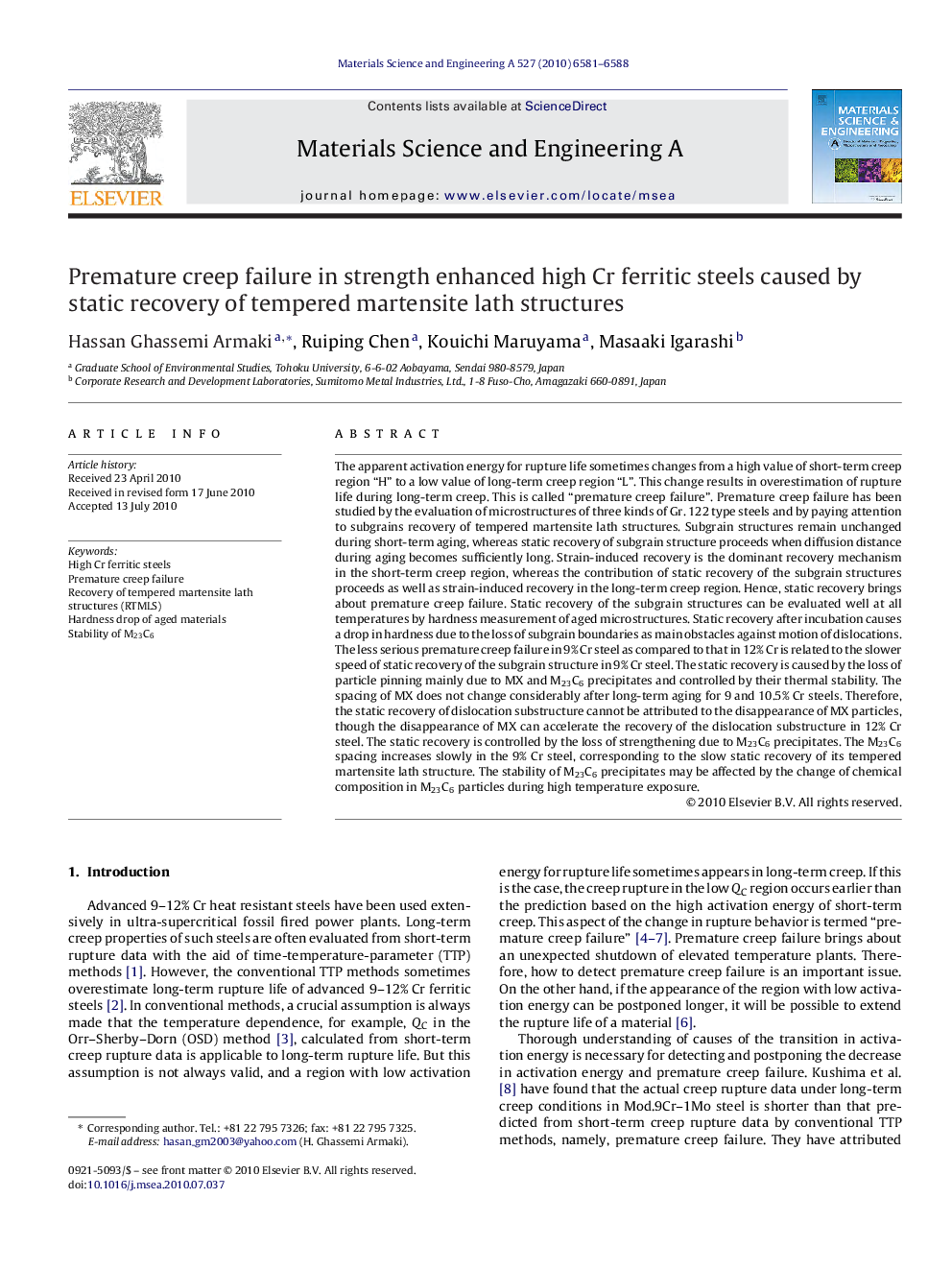| کد مقاله | کد نشریه | سال انتشار | مقاله انگلیسی | نسخه تمام متن |
|---|---|---|---|---|
| 1580149 | 1514826 | 2010 | 8 صفحه PDF | دانلود رایگان |

The apparent activation energy for rupture life sometimes changes from a high value of short-term creep region “H” to a low value of long-term creep region “L”. This change results in overestimation of rupture life during long-term creep. This is called “premature creep failure”. Premature creep failure has been studied by the evaluation of microstructures of three kinds of Gr. 122 type steels and by paying attention to subgrains recovery of tempered martensite lath structures. Subgrain structures remain unchanged during short-term aging, whereas static recovery of subgrain structure proceeds when diffusion distance during aging becomes sufficiently long. Strain-induced recovery is the dominant recovery mechanism in the short-term creep region, whereas the contribution of static recovery of the subgrain structures proceeds as well as strain-induced recovery in the long-term creep region. Hence, static recovery brings about premature creep failure. Static recovery of the subgrain structures can be evaluated well at all temperatures by hardness measurement of aged microstructures. Static recovery after incubation causes a drop in hardness due to the loss of subgrain boundaries as main obstacles against motion of dislocations. The less serious premature creep failure in 9% Cr steel as compared to that in 12% Cr is related to the slower speed of static recovery of the subgrain structure in 9% Cr steel. The static recovery is caused by the loss of particle pinning mainly due to MX and M23C6 precipitates and controlled by their thermal stability. The spacing of MX does not change considerably after long-term aging for 9 and 10.5% Cr steels. Therefore, the static recovery of dislocation substructure cannot be attributed to the disappearance of MX particles, though the disappearance of MX can accelerate the recovery of the dislocation substructure in 12% Cr steel. The static recovery is controlled by the loss of strengthening due to M23C6 precipitates. The M23C6 spacing increases slowly in the 9% Cr steel, corresponding to the slow static recovery of its tempered martensite lath structure. The stability of M23C6 precipitates may be affected by the change of chemical composition in M23C6 particles during high temperature exposure.
Figure optionsDownload as PowerPoint slideResearch highlights▶ Static recovery brings about premature creep failure. ▶ Static recovery of the subgrain structures is evaluated by hardness measurement. ▶ Static recovery is controlled by the loss of pinning due to M23C6 precipitates. ▶ Speed of static recovery increases with the addition of Cr from 9 to 12%.
Journal: Materials Science and Engineering: A - Volume 527, Issues 24–25, 25 September 2010, Pages 6581–6588